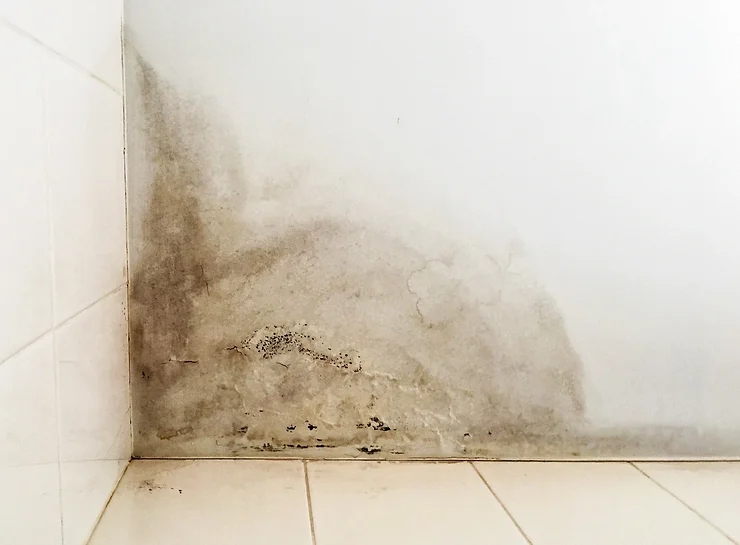Commercial, Specialist & Domestic Cleaning
Latest News
Specialist Mould Cleaning

The Importance of Mould Cleaning Services and Why Winter Can Make Mould Worse
Mould growth in homes and buildings is a common problem that can lead to significant health and structural issues. While mould can grow at any time of year, winter presents unique challenges that can exacerbate the problem.
Why Mould is a Problem
Mould is a type of fungus that thrives in damp, warm environments. It produces spores that can spread throughout your home, landing on surfaces like walls, ceilings, floors, and furniture. While some moulds are harmless, many can cause health problems, particularly for people with allergies, asthma, or weakened immune systems. Symptoms can include coughing, sneezing, eye irritation, and skin rashes, while prolonged exposure can lead to more serious issues such as respiratory infections or chronic sinusitis.
In addition to health risks, mould can cause significant structural damage. It can weaken wood, drywall, and other building materials, leading to costly repairs. The longer mould is left untreated, the more extensive the damage can become.
The Importance of Mould Cleaning Services
Mould cleaning services are crucial for ensuring that mould is safely and effectively removed from your home. While some people might attempt to clean mould themselves, professional services offer a number of advantages:
- Expertise and Equipment: Mould cleaning experts have the training and specialised equipment needed to safely remove mould and prevent it from spreading. They also know how to handle various types of mould.
- Thorough Removal: Professionals will not just clean the surface but also identify and address the source of moisture that caused the mould growth in the first place. This ensures the problem doesn’t return.
- Health and Safety: Mould removal often involves the use of chemicals and techniques that require knowledge of safety protocols. A professional team can handle mould removal without putting your health at risk.
- Prevention: After cleaning, mould specialists can also help with mould prevention strategies, such as improving ventilation or sealing leaks, to reduce the chances of future mould growth.
- Peace of Mind: By hiring professionals, homeowners can have confidence that the mould problem is resolved safely and effectively, protecting both their health and property.
Why Winter Can Make Mould Worse
Winter can create the perfect conditions for mould growth, and here’s why:
- Increased Indoor Humidity: In the colder months, people tend to keep windows and doors closed to conserve heat. This can lead to higher humidity levels inside the home, particularly in areas like bathrooms, kitchens, and basements. Humidity is one of the key factors that support mould growth. With the heating on, moisture from daily activities like cooking, showering, and drying clothes can become trapped in the air, raising humidity levels and creating ideal conditions for mould.
- Condensation: When cold air from outside meets warm air inside, condensation can form on windows, walls, and pipes. This moisture can easily turn into a breeding ground for mould, especially in areas that aren’t well-ventilated.
- Frozen Pipes: Freezing temperatures can cause pipes to burst, leading to water damage that provides ample moisture for mould to grow. A burst pipe in a hidden or hard-to-reach area can cause mould to spread before it’s even noticed.
- Limited Ventilation: During the winter months, homes are often sealed tightly to keep out the cold. While this is great for insulation, it can trap moisture inside. Lack of airflow, combined with high humidity, creates an ideal environment for mould growth.
How to Prevent Mould Growth in Winter
To avoid dealing with a mould problem in winter, there are several steps you can take to prevent its growth:
- Use a Dehumidifier: A dehumidifier can help maintain an optimal indoor humidity level, which should ideally be between 30-50%. This will reduce the amount of moisture in the air that mould needs to grow.
- Ventilate Your Home: Ensure proper airflow in rooms where moisture builds up, such as kitchens, bathrooms, and laundry rooms. Use exhaust fans while cooking or showering, and open windows when possible to let fresh air in.
- Fix Leaks Promptly: Check for any water leaks around windows, pipes, or roofs, and fix them as soon as possible to prevent water from accumulating inside your home.
- Insulate Pipes: Proper insulation of pipes can prevent them from freezing and bursting during the winter months.
- Remove Snow and Ice: Keep gutters clean and remove snow from roofs to prevent ice dams and leaks that can introduce water into your home.
Conclusion
Mould is a serious issue that can lead to health problems and costly repairs if not addressed promptly. Winter creates conditions that are more conducive to mould growth, including higher indoor humidity, condensation, and water damage from frozen pipes or snow. Mould cleaning services are essential to remove mould effectively and prevent it from returning, especially in the winter months. By acting early and taking preventative measures, you can protect your home, your health, and your wallet from the dangers of mould.
If you suspect mould in your home, don’t wait for the problem to get worse. Contact a professional mould cleaning service to ensure your home stays safe and healthy this winter.
